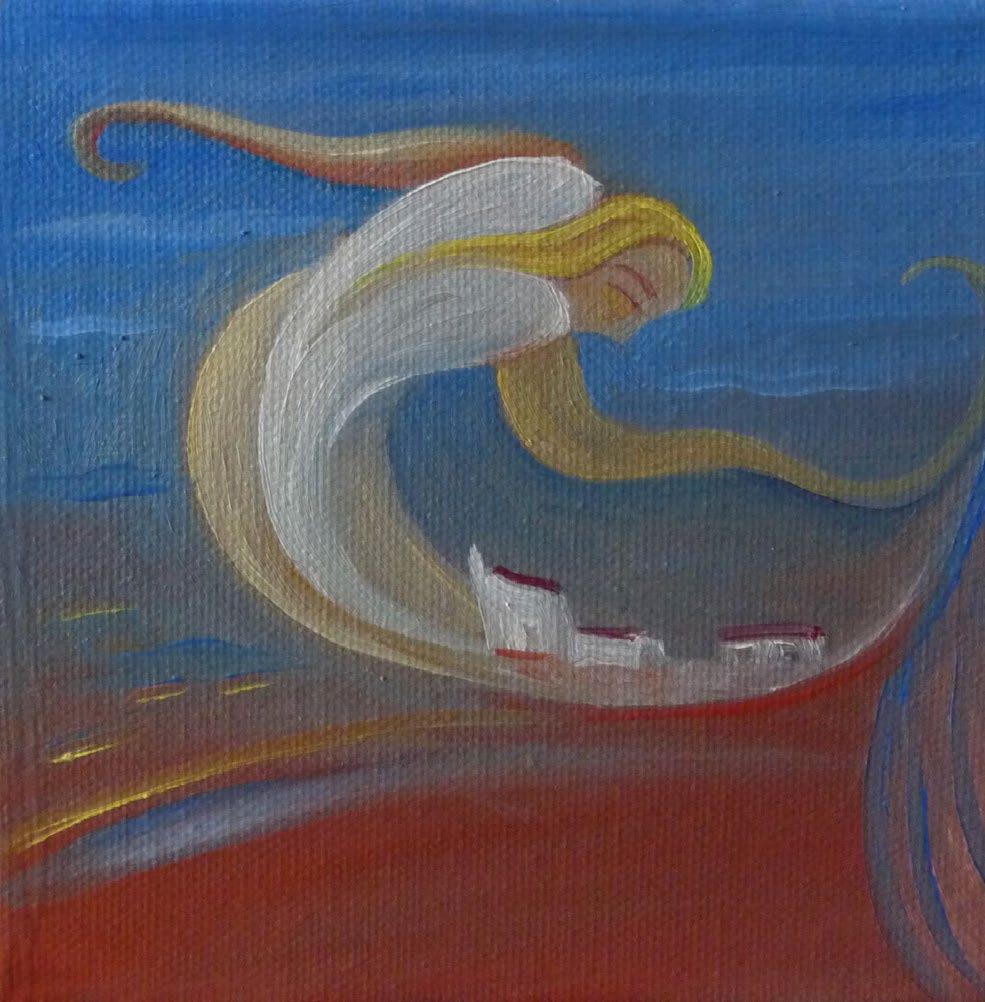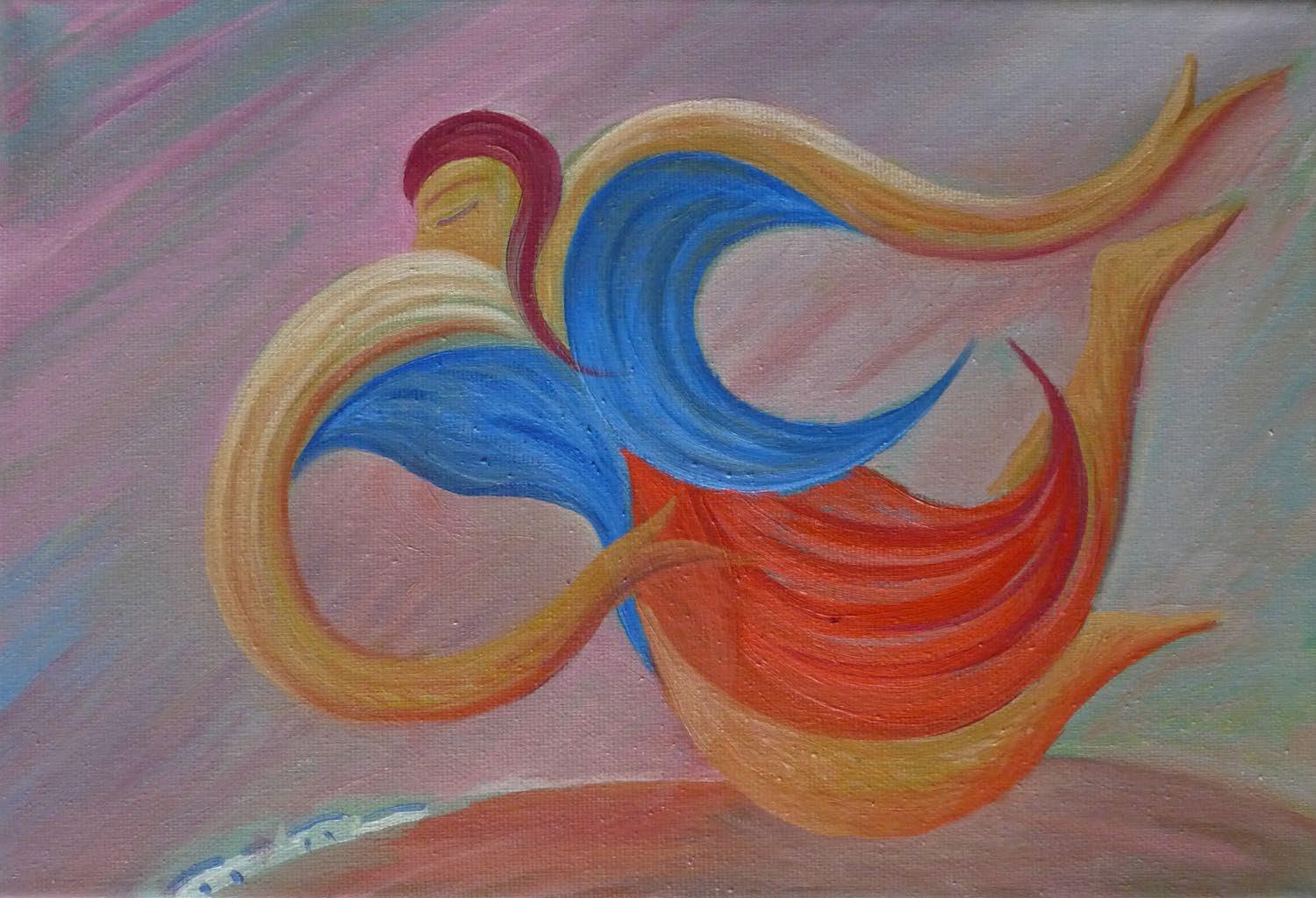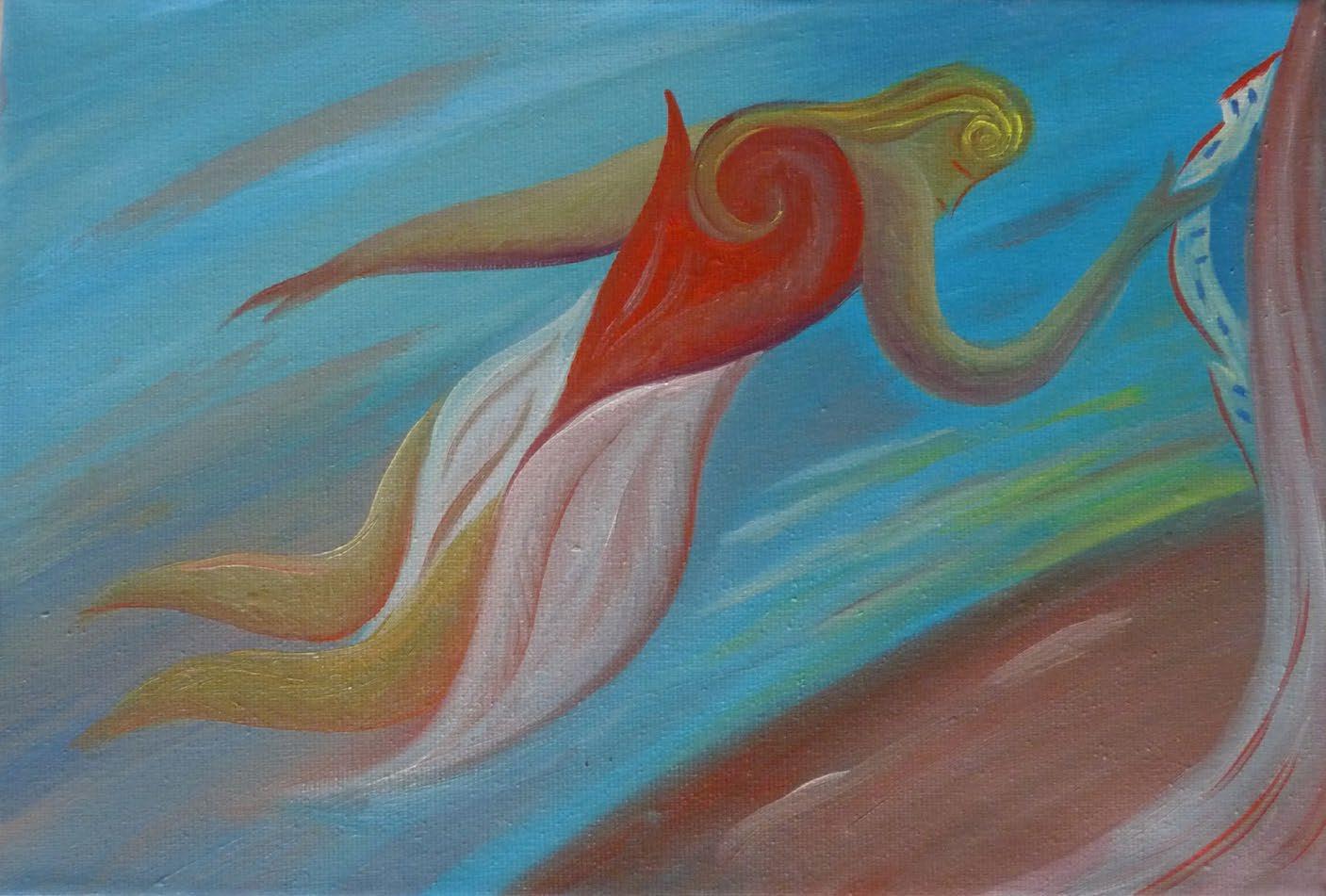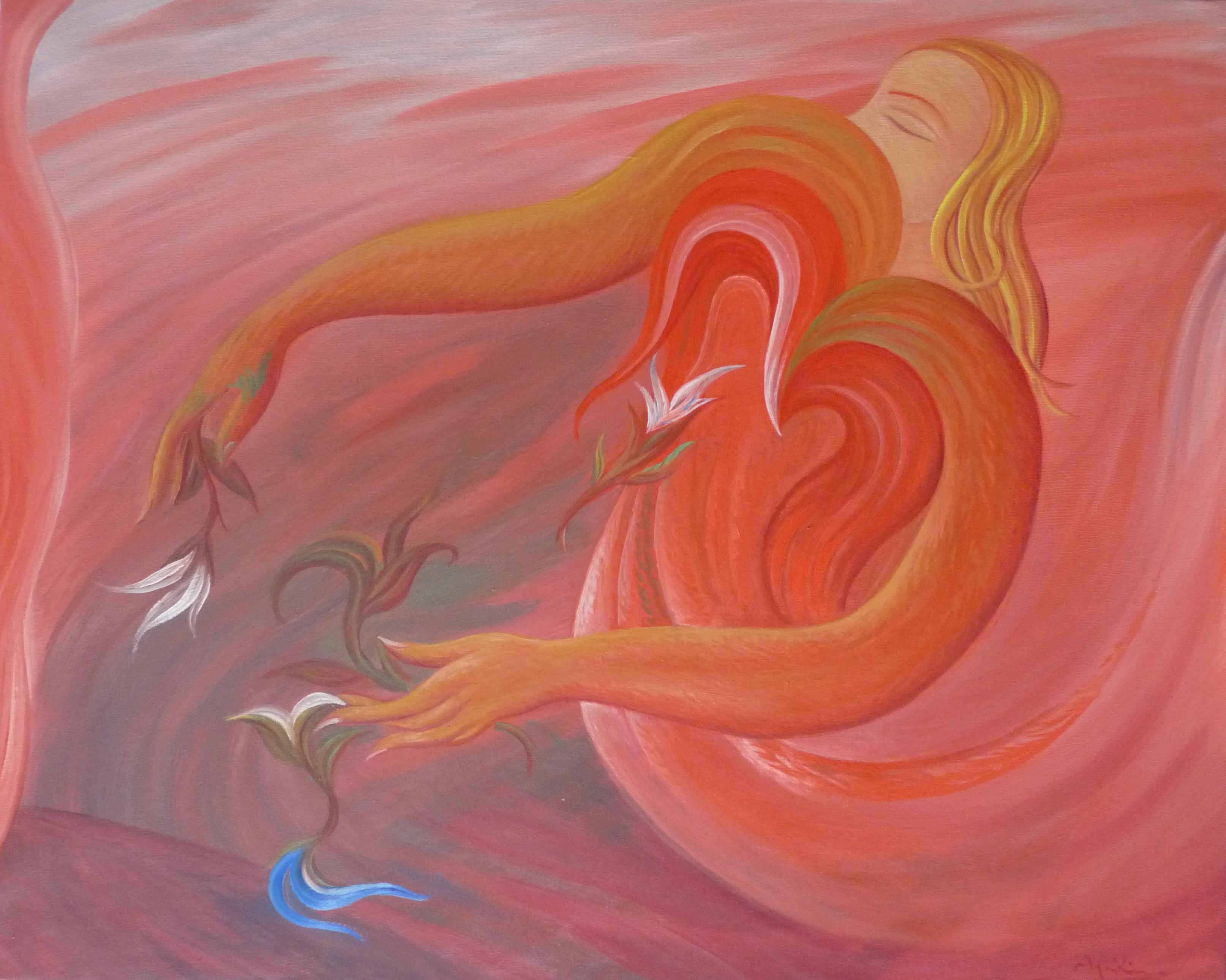Viajando en el viento

Sintítulo, 2020, óleo s/lienzo 15 x 15 cm



Sintítulo, 2020, óleo s/lienzo 15 x 15 cm

ATENEO DE MADRID. SALA PRADO. Calle Prado 19, Madrid.
2022

Carlos en su estudio en Madrid,1989.
Foto por Miguel Pérez Pardo.

Conocí a Carlos y a su pareja Blanca hace ya más de cuarenta y cinco años, casualmente, fuimos presentados por Daryl Kahn, fotógrafa americana con la que entablé amistad tras una exposición que ella hizo en el Centro de Cultural de Estados Unidos cuando él era un joven pintor, y yo colaboraba como crítico de arte en la Guía del Ocio.
Daryl nos invitó a comer a ambos en su casa y como almuerzo nos presentó una especie de yogurt con pepino incomible así que, tras un rato de charla con ella, Carlos, Blanca y yo nos miramos y decidimos escaparnos para nutrirnos con algo decente.
Carlos había regresado de su estancia como becario en la Academia Española de Roma, y me impresionaron los óleos de gran formato que había realizado por su originalidad, frescura y colorido. Tiempo de veladuras.
A partir de aquel momento mantenemos una amistad que pervive con fuerza, lo que me ha permitido seguir la trayectoria profesional de este gran pintor madrileño, español greco latino, centro europeo, norteamericano y global, pues su trayectoria profesional le ha llevado a hollar varios de los mundos culturales que engloba la vieja Gaia.
Cuando pienso en Carlos y en lo que ha sido su itinerario de vida, no puedo imaginarlo sino como un creador, con un gran oficio, que se ha dedicado devotamente a la religión de la pintura, y en ciertos aspectos lo comparo a la trayectoria de Picasso, otro gran practicante de esta religión, y del que creo ha tomado la fortaleza y la fe, la teología de la creatividad y la pasión por el ejercicio de esta creencia. Pero a diferencia de aquel, Carlos, pintor, a caballo entre dos siglos, encarna, al mismo tiempo, la consistencia del XX y la transparencia y fluidez del mundo líquido de Bauman, típica del siglo XXI.
Si veo a Carlos lo encuentro siempre trabajando, como su maestro de referencia, y en ese obrar inagotable le encuentran las musas, lo mismo dibuja, que hace escultura, que embadurna de óleo la superficie blanca que cada día le reta y le obliga a sacar lo mejor de sí mismo y a comunicar los sueños, paisajes, paisanajes y figuras que circulan por su enorme imaginación.
El hecho de haber nacido en Madrid y haberse criado en San Sebastián le ha tiznado la mirada del azul cielo de la ciudad del Guadarrama y del colorido de los azules húmedos del Igueldo, que abarcan, en función de la hora del día, desde la claridad acuosa hasta el azul marino y esta paleta de azules se ha convertido, sin que él sea consciente de ello, en su firma cromática fácilmente reconocible en este artista, ya domado por el destino.
A veces, desde la lejanía que físicamente nos distancia, él habita en Madrid y yo en Budapest, siento nostalgia de la juventud que fuimos cuando compartíamos carencias y mantel de papel en una taberna apuntalada en la calle San Pedro, donde el jornal nos daba para comer huevos fritos con patatas y poco más.
Esta sobriedad, austeridad casi cartuja, es otro de los rasgos que caracterizan a este pintor madrileño, pues no resulta fácil vivir de este oficio, y siempre se prioriza los materiales y tubos a utilizar como gasto, antes que los gastos para el bienestar de uno mismo.
Su fidelidad inquebrantable al amor por Blanca (detrás de cada genio hay siempre una mujer inteligente), profesional de la física y experta en meteorología para pilotos, sus libros son de obligada lectura para los mismos, le ha facilitado el disponer de al menos una red de protección particular derivada del amar, que económicamente le ha salvado, más de una vez, de estrellarse en el suelo en las caídas que todo pintor, dedicado en cuerpo y alma a su pintura, puede sufrir en un momento dado, y le ha proporcionado una excepcional gestora que guarda, como oro en paño, el secreto de la proyección internacional de que goza su obra.
Carlos es un hombre inquieto e interesado por lo que pasa en el mundo y esta inquietud y curiosidad inmensa que posee le ha llevado a vivir en Roma, en París, en los Cárpatos de Rumanía, en los lagos de Budapest, en el desierto de Nuevo Méjico o en la megalópolis Neoyorquina, por citar algunos lugares de su largo periplo.
Y esta interacción con medios culturales y lingüísticos tan diversos, constituye una necesidad vital para un autodidacta clásico y moderno, como es él, y gracias a ella ha generado, en su visión del mundo, una perspectiva de panóptico, estética y ética precursora de la actual globalización que ya irremediablemente nos alcanza y en la que estamos, querámoslo o no, inmersos.
Como profeta de las artes su pintura, adelantada a los tiempos, ha reflejado, hace años la importancia que iban a tener el tema de los refugiados, o la naturaleza en riesgo, reconocido el pasado año con el premio Nature/Nurture en Nueva York, en un mundo, demográficamente desbordado y globalizado.
De Nietzsche adopta su filosofía de vida cuando este afirma que, “tenemos el artepara no perecer a manos de la verdad” , y que, “el arte debe ante todo embellecer la viday también hacernos a nosotrossoportablespara losdemás, si es posible hastaagradables” .
En su etapa como seminarista de la pintura Carlos Aquilino tomó como maestros a Velázquez, Goya, Picasso, Juan Gris, Zóbel, Saura y Sempere, y en escultura sus profesores fueron Alberto Sánchez y Calder. Cursó master europeo con Miguel Ángel, Rafael y Gustav Klimt y se doctora con impresionistas como Pissarro y Monet y amplía estudios con Edward Hopper y Georgia O’Keeffe en Norteamérica. Con la amalgama de todos ellos forja una personalidad pictórica reconocible donde aúna la fuerza y la delicadeza que le caracterizan.
Como sacerdote de esta religión Aquilino trata con sus cuadros de escapar y facilitarnos la huida de una realidad demasiado dura para poderla sobrellevar, introduciendo en nuestros hogares hogueras que calientan nuestro espíritu, y relajan nuestras almas llenándolas de colores y calores que nos hacen soñar, que nos llevan a un mundo onírico y homérico que nos hace descansar, nos reconforta y prepara para volver a afrontar la dura realidad.
Varias han sido las etapas en que se pueden sintetizar sus más de cincuenta años dedicado a la pintura y la etapa que ahora nos ocupa y que nos presenta bajo la denominación Viajando en el viento corresponde con su estado anímico cuando ya avanza, con paso firme, a una senectud singular en su sigilo, suavidad en los colores, e inicia el viaje que abandona, trasciende, deja ya cualquier contacto con la tierra y asciende en vuelo o en levitación hacia el cielo.
Ese cielo velazqueño de los atardeceres madrileños al que asciende, como última morada, lleva jirones de la deconstrucción constructivista de Kassák Lajos en su última época y de la desfiguración abstracta de Mattis Teusch en sus flores del alma , dulcificadas por una sensibilidad propia del impresionismo.
De nuevo Carlos Aquilino nos anuncia, con su carácter profético, el fin último de la existencia humana, cuando apaga y hace desaparecer la figura de los cuerpos, que él convierte en colores, en pensamientos, en nubes fugaces que se desplazan por el espacio cromático como reflejos iluminados de los que un día fueron, como sombras de lo trascendente, de esa energía vital que escapa a la muerte y que se dirige, para aquellos creyentes al paraíso, y para los agnósticos, a un universo que carece de finitud.
De alguna forma su pintura nos predica y nos propone, simbólicamente, la fugacidad de la última belleza, del último rayo de sol y de luz del día arropado con cálidos colores extraídos del tenue verde de los bosques, del suave azul de la mar, del tamizado ocre de los desiertos, del purísimo blanco de la nieve y de los dorados amarillos solares en su giro estelar, dinámica del movimiento postrero, en que resume y rezuma su sabiduría de la importancia del sentido estético de la vida y del tiempo ya consumido, y desea que este legado penetre en nuestros ojos, como esa pequeña y sencilla llama que crepita, parpadea en la arena, y llama nuestra atención pues aporta misterio, claridad, paz y alegría, y a la que contemplamos y seguimos arrobados hasta su extinción.
Ramón de Marcos Sanz. Sociólogo español y centroeuropeo.
Sintítulo, 2021, óleo s/lienzo 24 x 35 cm

I met Carlos and his partner, Blanca, more than forty-five years ago. By chance, we were introduced by Daryl Kahn an excellent American photographer with whom I became friends after an exhibition she had at the United States Cultural Center in Madrid. At that time Carlos was a young painter and I collaborated as an art critic in the leisure and culture magazine Guía del Ocio.
Daryl invited us both to lunch at her house. She was a great photography artist but a poor cook : for lunch she presented us with some kind of inedible yogurt with cucumber, so after a chat with her for a while, Carlos, Blanca and I looked at each other and decided to escape to nourish ourselves with something decent.
Carlos had returned from his stay in Rome holding a scholarship awarded by the Spanish Academy in Italy, and I was impressed by his large format oil paintings for their originality, freshness and colorfulness.
From that moment on, we maintain a steadily subsisting friendship that has allowed me to follow the professional career of this great painter from Madrid, a Spanish man who, at the same time, is Greek-Latin, central European, North American and global, because his professional career has led him to explore several of the cultural worlds that encompasses the old Gaia.
When I think of Carlos and his life itinerary, I can only imagine him as a creator, with a great craft, who has dedicated himself devotedly to the religion of painting, and in certain aspects I compare him to Picasso's trajectory, another great practitioner of this religion, and from whom I believe he has taken the strength and faith, the theology of creativity and the passion for the exercise of this belief. But unlike the former, Carlos, a painter straddling two centuries, embodies, at the same time, the consistency of the 20th century and the transparency and fluidity of Bauman's liquid world, typical of the 21st century.
When I visit Carlos, I always find him working, like his master of reference, and in that inexhaustible work the muses find him. He does drawings and sculpture; he daubs the white surface with oil that challenges him every day and forces him to get the best of himself
and to communicate the dreams, landscapes, peasants and figures that circulate through his enormous imagination.
The fact that he was born in Madrid and grew up in San Sebastián has smudged his look with the sky blue color of the city of Guadarrama and the color of Igueldo’s humid blues, which range, depending on the time of day, from watery clarity to navy blue, and this palette of blues has become, without him being aware of it, his easily recognizable chromatic signature, already tamed by destiny.
Sometimes, from the distance that physically separates us he lives in Madrid and I in Budapest I feel nostalgia for the youth we were when we shared shortage and paper tablecloth in a ruinous tavern in San Pedro Street, where our salary only allowed us to eat fried eggs with potatoes, and little else.
This sobriety, austerity, almost Carthusian, is another of the features that characterize this painter from Madrid, because it is not easy to make a living from this profession, and he always prioritizes the materials and tubes for an expense, rather than the expenses for one’s own well-being.
His unwavering fidelity to his love for Blanca (behind every genius there is always an intelligent woman), a professional physicist and an expert in meteorology whose lecture books are part of the academic curriculum for pilots, has at least ensured for him a network of private protection derived from love, which economically has saved him, more than once, from crashing into the ground that every painter, dedicated body and soul to his painting, can suffer at any given moment, and has provided him with an exceptional manager who safeguards, like gold , the secret of the international projection that his work enjoys.
Carlos is a restless man interested in what is happening in the world and this restlessness and immense curiosity that he possesses has led him to live in Rome, Paris, the Carpathian Mountains of Romania, the lakes of Budapest, the desert of New Mexico or the megalopolis of New York, to name a few places on his long journey. And this interaction with so diverse cultural and linguistic environments constitutes a vital necessity for a classic and modern autodidact, as he is, and thanks to it he has generated, in his vision of the world, a perspective of panoptic, aesthetic and ethical precursor of the current globalization that already inevitably reaches us and in which we are immersed, whether we like it or not.
As a prophet of the arts, his painting, ahead of its time, has reflected, years ago, the importance that the theme of refugees would have, or the nature at risk, recognized last year with the Nature/Nurture award in New York, in a world that is demographically overwhelmed and globalized.
He adopts his philosophy of life from Nietzsche who affirms that “ we have art so as not to perish at the hands of truth” , and that “art must above allbeautify life and also make ourselves bearable forothers, or ifpossible, even attractive”
.
During his time as a painting seminarian, Carlos Aquilino took as teachers Velázquez, Goya, Picasso, Juan Gris, Zóbel, Saura and Sempere, and in sculpture his teachers were Alberto Sánchez and Calder. He studied European master with Michelangelo, Raphael and Gustav Klimt, and did his doctorate with impressionists such as Pissarro and Monet and furthered his studies with Edward Hopper and Georgia O’Keeffe in North America. With the amalgam of all of them he forges a recognizable pictorial personality where he combines the strength and delicacy that characterize him.
As a priest of this religion, with his paintings Aquilino intends to escape and make it easier for us to escape from a reality that is too harsh to bear, introducing bonfires into our homes that warm our spirits and relax our souls, filling them with colors and warmth that make us dream, that take us to a dreamlike and Homeric world that makes us rest, comforts us and prepares us to face the harsh reality again.
There have been several stages in which we can synthesize Aquilino’s more than fifty years dedicated to painting. The stage that now occupies us and that he presents us under the name Traveling in the wind, corresponds to his state of mind when he is already advancing, with a firm step, to a singular senescence in clandestine, softness in the colors, and begins the journey that abandons, transcends, leaves any contact with the earth and ascends in flight or levitates towards the sky.
That Velazquez sky of Madrid’s sunsets to which he ascends, as his last resting place, bears shreds of Kassák Lajos' constructivist deconstruction in his last period and of the abstract disfigurement of Mattis Teusch in his flowers of the soul , sweetened by a sensitivity typical of impressionism.
Once again Carlos Aquilino announces to us, with his prophetic character, the ultimate goal of human existence, when he extinguishes and makes the figure of the bodies disappear, which he turns into colors, into thoughts, into fleeting clouds that move through the chromatic space like illuminated reflections of those who once were, like shadows of the transcendent, of that vital energy that escapes death and that is directed, for those believers to paradise, and for agnostics, to a universe that lacks finitude.
In some way, his painting preaches to us and symbolically proposes the transience of the last beauty, of the last ray of sun and daylight wrapped in warm colors extracted from the soft green of the forests, the soft blue of the sea, the filtered ocher of the deserts, the purest white of snow and the golden yellow solar in its stellar spin, dynamics of the last movement, in which he sums up and exudes his wisdom of the importance of the aesthetic sense of life and the time already consumed. He wishes this legacy to penetrate our eyes, like that small and simple flame that crackles, flickers in the sand, and draws our attention because it brings mystery, clarity, peace and joy, and which we contemplate and follow in rapture until its extinction.
Text: Ramón de Marcos Sanz. Spanish and Central European sociologist TRANSLATION: Nora Szigeti. Hungarian lawyer and translator. BudapestSintítulo, 2021, óleo s/lienzo 24 x 35 cm

Navegandohaciati, 2021
óleo s/lienzo, 130 x
cm

Inmerso




Textos: R a m ó n d e M a r c o s S a n z
Traducción: Nora Szigeti
Fotografía: Miguel Pérez Pardo, Carlos Aquilino
Coordinación: B l a n c a G o n z á l e z L óp e z ©Carlos Aquilino 2022 carlos.aquilino@gmail.com
Agradezco al Ateneo de Madrid y en particular al grupo de la Sección de Artes Plásticas del mismo Josefina Hesse Gil, Josefa Álvarez Moles, África Malo de Molina y Loretta Polgrossi Guerra su inestimable ayuda, sin la cual no hubiera sido posible realizar esta exposición.
